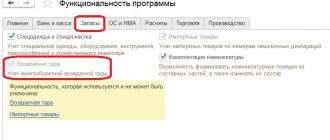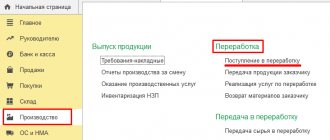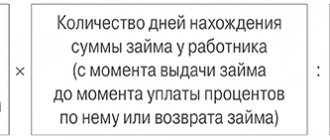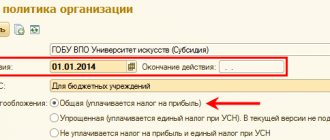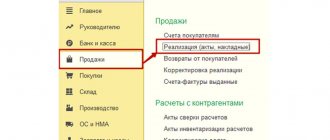Purchase of containers for a fee
If the organization purchased containers for a fee (under sales, delivery, exchange agreements), take into account its receipt at the actual cost.
Reflect the receipt of containers at actual cost using the following entries:
Debit 10-4 Credit 60 (76, 75-1…)
– containers are capitalized at actual cost;
Debit 19 Credit 60 (76)
– VAT on purchased packaging is taken into account.
Determine the actual cost of the purchased packaging based on the data from the primary documents.
Such rules are established in the Instructions for the chart of accounts, paragraphs 5 and 6 of PBU 5/01, paragraph 62 of the Methodological Instructions, approved by Order of the Ministry of Finance of Russia dated December 28, 2001 No. 119n.
Situation: does the supplier need to include input VAT in the actual cost of packaging purchased for packaging its own products?
Yes, it is necessary if the organization plans to use the container as returnable.
In accounting, the actual cost of packaging received under paid contracts is recognized as the cost of its acquisition (clause 63 of the Methodological Instructions, approved by Order of the Ministry of Finance of Russia dated December 28, 2001 No. 119n, clause 6 of PBU 5/01). The actual cost is also formed by input VAT, the cost of which is not reimbursed from the budget.
When selling products in returnable containers, VAT is not charged on the cost of such containers, since in this case there is no sale (Article 146 of the Tax Code of the Russian Federation). This means that input VAT paid to the container supplier cannot be deducted (clause 2 of Article 170 of the Tax Code of the Russian Federation).
Thus, if the organization plans to use the purchased packaging as returnable, include input VAT in the actual cost of such packaging. In other cases, do not take into account input VAT when determining the actual cost of received packaging.
In accounting, record the receipt of packaging that the organization plans to use as returnable by posting:
Debit 10-4 Credit 60 (76, 75-1…)
– containers are capitalized at actual cost (including input VAT).
Such rules are established in the Instructions for the chart of accounts.
The procedure for accounting for containers on an off-balance sheet account
Off-balance sheet accounts are designed to collect information about valuables that belong to a company or entrepreneur only temporarily.
IMPORTANT! An individual entrepreneur is not required to keep accounting on the basis of clause 2 of Art. 6 of the Law “On Accounting” dated December 6, 2011 No. 402-FZ. But he can keep accounting of business transactions for his own convenience. In the future, we will consider the nuances of accounting for containers for both legal entities and individual entrepreneurs.
In what situations are container transactions reflected using off-balance sheet accounts?
If the supplier transfers the products to the buyer in returnable packaging and takes a deposit from him, then the amount of the deposit received is recorded in the supplier’s accounting using account 008 “Securities for obligations and payments received”:
| Debit | Credit | Contents of operation |
| 50, 51 | 76 | A deposit was received to secure the obligation to return the container. |
| 008 | The pledge amount is reflected on the balance sheet | |
| 76 | 41-3, 10-4 | The returnable packaging was handed over to the buyer |
| 41-3, 10-4 | 76 | Returnable packaging received from buyer |
| 76 | 50, 51 | The buyer's deposit was returned |
| 008 | The collateral amount has been debited from the off-balance sheet account |
You can establish control over the safety of packaging transferred to the buyer in 2 ways:
- Create an accounting register (let's call it, for example, a container movement register) and record in it who, when and how many boxes, boxes and other containers were transferred, when and in what condition they returned. A sample of such a journal should be drawn up taking into account the requirements of paragraph 4 of Art. 10 of Law No. 402-FZ and included in the accounting policy.
- Reflect the containers transferred to the buyer on the balance sheet - in this case, the company or entrepreneur should develop and consolidate in the accounting policies and working chart of accounts a corresponding account for returnable containers held by the buyer. Then the transfer of the collateral container to the counterparty will be reflected in the credit of the off-balance sheet account, and its return - in the debit of the same account. This method is recommended by some officials, but we are skeptical about it - reflecting our own property off the balance sheet clutters up accounting and contradicts the logic of off-balance sheet accounts, since the container belongs to the company even when it is with the buyer.
The returnable packaging itself is not included in the cost of goods sold and is reflected in the primary statement as a separate line. Returnable containers should be included in the settlement reconciliation report.
The buyer takes into account the received collateral returnable packaging on subaccount 3 of account 41 “Containers under goods and empty” or subaccount 4 of account 10 “Containers and packaging materials” at collateral prices (clause 183 of the Methods), and the amount of the collateral - on account 009 “Securing obligations and payments issued":
| Debit | Credit | Contents of operation |
| 76 | 50, 51 | A deposit was transferred to secure the obligation to return the packaging |
| 009 | The amount of collateral is reflected on the balance sheet | |
| 41-3,10-4 | 76 | Returnable deposit containers received |
| 76 | 41-3,10-4 | Returnable deposit containers were transferred to the supplier |
| 50, 51 | 76 | The deposit amount for the container has been received |
| 009 | Deposit amount written off |
There is another point of view on accounting for returnable packaging from the buyer: since the property of other legal entities currently owned by the organization must be reflected separately in accounting (clause 5 of PBU 1/2008, approved by order of the Ministry of Finance of the Russian Federation dated October 6, 2008 No. 106n), the collateral containers should be stored until returned to the supplier in account 002 “Inventory and materials received for safekeeping.” Then the buyer’s accountant records transactions with returnable packaging as follows:
| Debit | Credit | Contents of operation |
| 76 | 50, 51 | A deposit was transferred to secure the obligation to return the packaging |
| 009 | The amount of collateral is reflected on the balance sheet | |
| 002 | Returnable deposit containers received | |
| 002 | Returnable deposit containers were transferred to the supplier | |
| 50, 51 | 76 | The deposit amount for the container has been received |
| 009 | Deposit amount written off |
The use of account 002 seems logical in this situation, since the container does not belong to the buyer, putting it on the balance sheet means violating the principle of property separation and reliability of accounting, distorting the balance sheet indicators on line 1210 and cluttering up the accounting.
Returnable containers should be handed over to the supplier within the period specified in the contract (clause 179 of the Methodological Instructions, Article 517 of the Civil Code of the Russian Federation).
If the buyer does not return the container on time or delivers damaged containers, the supplier has the right not to return the deposit to the buyer (clause 1 of Article 334 of the Civil Code of the Russian Federation). In this case, non-returned packaging is considered sold: the supplier must charge VAT and issue an invoice to the buyer (subclause 1, clause 1, article 146 of the Tax Code of the Russian Federation, article 218 of the Civil Code of the Russian Federation). The amount of the pledge is taken into account as other income (clause 7 of PBU 9/99, approved by order of the Ministry of Finance of the Russian Federation dated May 6, 1999 No. 32n).
IMPORTANT! The issue of accounting for input VAT on containers from a supplier is not simple: officials prohibit tax amounts presented by the container manufacturer from being deducted (letter of the Federal Tax Service of the Russian Federation in Moscow dated October 2, 2007 No. 19-11/093454, letter of the Ministry of Finance of the Russian Federation dated April 30, 2013 No. 03-07 -11/15419). But judges support companies that decide to deduct VAT on deposited containers (Resolution of the Federal Antimonopoly Service of the Eastern Military District dated July 14, 2011 No. A29-8379/2010). If the buyer does not return the container, then the Ministry of Finance requires that the supplier calculate and pay VAT to the budget on the amount of the deposit of the price of the container at a rate of 18%, and not at the calculated rate of 18/118 (letter of the Ministry of Finance of the Russian Federation dated March 21, 2007 No. 03-07-15 /36). In this article, we do not consider the nuances of calculating VAT in case of non-return of deposit containers, since this issue requires a separate detailed study.
The following entries should be made in the supplier's accounting:
| Debit | Credit | Contents of operation |
| 76 | 41-3,10-4 | Reversal of the transaction for the transfer of returnable collateral containers to the buyer (negative transaction amount) |
| 62 | 91 | The sale of containers to the buyer is reflected |
| 91 | 68 | VAT charged on sales |
| 91 | 41-3,10-4 | The collateral value of the sold containers was written off |
| 008 | Deposit for container written off | |
| 76 | 62 | The deposit amount is taken into account as payment for unreturned packaging |
The buyer receives the deposited containers on his balance sheet minus VAT, and the deposit amount becomes payment for the received containers. The following entries should be made in the buyer's accounting:
| Debit | Credit | Contents of operation |
| 41-3,10-4 | 76 | Reversal: receipt of returnable packaging at the deposit price |
| 41-3,10-4 | 60 | Unreturned deposit containers were capitalized (excluding VAT) |
| 19 | 60 | Accounting for VAT on unreturned deposit containers based on the supplier’s invoice |
| 60 | 76 | The amount of the deposit transferred to the supplier is taken into account as payment for unreturned packaging |
| 009 | The deposit amount for unreturned deposit containers has been written off |
If the buyer received the received deposit container for the balance on account 002, then the transactions in his accounting will be as follows:
| Debit | Credit | Contents of operation |
| 002 | Reversal: receipt of returnable packaging at the deposit price | |
| 41-3,10-4 | 60 | Unreturned deposit containers were capitalized (excluding VAT) |
| 19 | 60 | Accounting for VAT on unreturned deposit containers based on the supplier’s invoice |
| 60 | 76 | The amount of the deposit transferred to the supplier is taken into account as payment for unreturned packaging |
| 009 | The deposit amount for unreturned deposit containers has been written off |
Reflection at accounting prices
In accounting, the organization can reflect the receipt of packaging, both purchased for a fee and manufactured in-house, at accounting prices. Do this if you have a significant range of products and a high turnover rate of containers (clauses 80 and 166 of the Methodological Instructions, approved by Order of the Ministry of Finance of Russia dated December 28, 2001 No. 119n).
Situation: how can a supplier take into account the receipt of containers purchased for packaging their own products in accounting? The organization reflects the receipt of packaging at accounting prices.
All organizations that reflect the receipt of materials at accounting prices must use accounts 15 and 16.
However, when containers arrive, a special procedure applies. The difference between the actual cost and the accounting price of the container, which can also be the collateral value, must be taken into account as part of other income (expenses) at the time of its receipt. Make the following wiring:
Debit 10-4 Credit 20 (23, 60, 76, 75-1…)
– the container is capitalized at the accounting price;
Debit 19 Credit 60 (76)
– VAT is taken into account on packaging purchased for a fee. If the purchased packaging is returnable, do not make this posting;
Debit 20 (23, 60, 76, 75-1...) Credit 91-1
– reflects the positive difference between the accounting price and the actual cost of the container;
or
Debit 91-2 Credit 20 (23, 60 76, 75-1…)
– reflects the negative difference between the accounting price and the actual cost of the container.
This procedure follows from paragraph 166 of the Methodological Instructions, approved by Order of the Ministry of Finance of Russia dated December 28, 2001 No. 119n.
When calculating income tax, the difference between the accounting price and the actual cost cannot be taken into account at the time of purchasing the container. It will be included in the calculation of the tax base at the time the container is transferred to production or sold (Article 254 of the Tax Code of the Russian Federation). As a result, a temporary difference is formed in accounting, which leads to the emergence of a deferred tax asset (if the accounting price is less than the actual cost) or a deferred tax liability (if the accounting price is greater than the actual cost). Therefore, when the container arrives, make the following wiring:
Debit 09 Credit 68 subaccount “Calculations for income tax”
– a deferred tax asset is reflected;
or
Debit 68 subaccount “Calculations for income tax” Credit 77
– deferred tax liability is reflected.
As soon as the cost of packaging is taken into account as an expense when calculating income tax, make a reverse entry. This procedure follows from paragraphs 8–18 of PBU 18/02 and the Instructions for the chart of accounts (accounts 09, 68, 77).
Reflection on collateral value
If an organization plans to use the container as returnable and retain a deposit for it from the buyer of the product, account for its receipt at the deposit value. In this case, make the following entries:
Debit 10-4 Credit 60 (20, 23, 76, 75-1…)
– containers are capitalized at actual cost;
Debit 10-4 Credit 91-1
– reflects the positive difference between the deposit price and the actual cost of the container;
or
Debit 91-2 Credit 10-4
– reflects the negative difference between the deposit price and the actual cost of the container.
If the deposit price is greater than the actual cost of the container, then permanent differences arise (clause 4 of PBU 18/02). Income that arises in accounting when reflecting the collateral value by the excess amount will never be recognized in tax accounting. As well as the corresponding costs during transfer to production.
Therefore, when purchasing containers, reflect the permanent tax asset in your accounting. This must be done using the following wiring:
Debit 68 subaccount “Calculations for income tax” Credit 99
– a permanent tax asset is reflected in the amount of the positive difference between the deposit price and the actual cost of the container.
At the time of writing off the packaging, reflect the occurrence of a permanent tax liability:
Debit 20 (26, 44…) Credit 10-4
– the write-off of packaging at the deposit price is reflected;
Debit 99 Credit 68 subaccount “Calculations for income tax”
– a permanent tax liability is reflected in the amount of the positive difference between the deposit price and the actual cost of the container.
The difference that arises when the deposit price is less than the actual cost cannot be taken into account only at the time of purchasing the container. It will be included in the calculation of the tax base at the time the container is transferred to production (Article 254 of the Tax Code of the Russian Federation). A deductible temporary difference arises. Therefore, reflect the deferred tax asset in your accounting, which will be repaid when the cost of packaging is written off as expenses. Reflect the deferred tax asset with the following entries:
Debit 09 Credit 68 subaccount “Calculations for income tax”
– a deferred tax asset is reflected in the amount of the negative difference between the deposit price and the actual cost of the container.
At the time of writing off the packaging, make the following entries:
Debit 20 (26, 44…) Credit 10-4
– the write-off of packaging at the deposit price is reflected;
Debit 68 subaccount “Calculations for income tax” Credit 09
– the deferred tax asset is repaid in the amount of the negative difference between the deposit price and the actual cost of the container.
This procedure is provided for in paragraphs 166, 182 of the Methodological Instructions, approved by order of the Ministry of Finance of Russia dated December 28, 2001 No. 119n, paragraphs 8–18 of PBU 18/02.
How to reflect the return of packaging in transactions
All other organizations account for returnable packaging on account 10.04.
Technological (necessary for the production process) and inventory containers (used for production or household needs) are accounted for in all organizations on accounts 01.01 or 10.01, depending on the service life and cost of such containers.
In addition, based on the decision of the management of the enterprise, it is possible to establish in the accounting policy the keeping of records of returnable packaging on off-balance sheet account 002, since such packaging does not become the property of the buyer.
Receipt of containers from the supplier is reflected at the prices established in the contract.
| Account Dt | Kt account | Wiring Description | Transaction amount | A document base |
| 10.04 (41.03) | 60.01 | The packaging received from the supplier has been capitalized | 2500 | Invoice, agreement, certificate |
The return of packaging to the supplier is processed by return posting. If the delivery of containers is carried out at the expense of the buyer, then he attributes these costs to the cost of the product (goods).
| Account Dt | Kt account | Wiring Description | Transaction amount | A document base |
| 60.01 | 10.04 (41.03) | The container was returned to the supplier | 2000 | Invoice, agreement, certificate |
The supply agreement may set the price of the container against a deposit (for example, 80%), if it is not returned by the buyer, the amount of the deposit remains with the seller. When the packaging is subsequently returned, the supplier transfers a deposit.
| Account Dt | Kt account | Wiring Description | Transaction amount | A document base |
| 60.01 | 51 | The deposit amount for the packaging was transferred to the supplier | 400 | Agreement |
| 60.01 | 10.04 (41.03) | Returning containers to the supplier | 500 | Invoice, agreement, certificate |
| 51 | 60.01 | Refund of the deposit for packaging by the supplier | 400 | Agreement |
| Account Dt | Kt account | Wiring Description | Transaction amount | A document base |
| 20.01, 23, 25, 26 | 10.03 (41.03) | Containers containing materials transferred to production are written off as production costs | 200 | Accounting information |
According to Art. 481 of the Civil Code of the Russian Federation, for some types of goods delivery in containers is mandatory. Violation of this clause may become the basis for recognizing the product as being of low quality, which may cause claims from the buyer or even the return of the product.
The container is recognized as returnable in the text of the purchase and sale agreement (clause 3 of Article 254 of the Tax Code of the Russian Federation). This means that it must be returned to the supplier in its original condition, unless the parties agree otherwise (Article 517 of the Civil Code of the Russian Federation). The seller takes a deposit from the buyer for returnable packaging, and after delivery it returns the deposit.
It is possible to register returnable containers as inventories in accounting if their useful life does not exceed 1 year or one operating cycle (if it exceeds 12 months).
To reflect transactions with such containers, the following are used:
- account 22 “Low value and wearable items”;
- subaccount 10.4 “Containers and packaging materials” - for warehouse and in-production storage and movement;
- subaccount 284 “Containers for goods” - mainly used by trading enterprises.
If the period of use of the container is greater than 12 months, and the cost is included in the limit established for the fixed assets, it falls under the definition of a fixed asset and should be recorded in the corresponding account 115 “Non-current assets”. Like all fixed assets, it is subject to depreciation and subsequent write-off.
The supplier gives the container along with the goods, retaining ownership of it. In the receipt documents, a separate line is allocated to account for the cost of purchasing such containers; it is not added to the cost of other inventories, but is calculated at net realizable value. When it arrives with the goods, it will have a separate line on the delivery note or invoice.
Stock containers are recorded on account 41 “Containers under goods and empty,” and special containers are recorded on account 01 as fixed assets.
The safety of returnable packaging and its return can be guaranteed by the text of the contract; in this case, no deposit is required, but sanctions for damage or loss of packaging are stipulated. This procedure will have to be taken into account in off-balance sheet account 002 “Inventory and materials accepted for safekeeping.”
The buyer who has paid a deposit for returnable packaging undertakes to return it to the seller in undamaged condition, after which he will receive the deposit amount back. This procedure is subject to accounting on balance sheet accounts 10 “Container” (if the goods arrived for your own use) and 41 “Container under the goods” (if resale is planned).
Uchkuduk LLC entered into 2 agreements:
- Agreement for the supply of lemonade for its subsequent resale to the consumer. Lemonade in glass bottles is in plastic boxes of 6 pieces. The boxes are multi-return containers, for non-return of which there is a fine of 5,000 rubles. – reimbursement of the cost of boxes.
- Agreement for the supply of drinking water for employees of Uchkuduk LLC. Water cans are provided by the supplier on a returnable basis with a deposit of RUB 2,000.
Postings regarding containers under Contract 1, made by Uchkuduk LLC (buyer):
- debit 002 “Inventory and materials accepted for safekeeping” – 5,000 rubles. – plastic boxes in which lemonade is supplied are accepted;
- credit 002 – 5,000 rub. – plastic boxes are returned to the supplier.
Postings regarding containers under Contract 1, made by Zhazhda LLC (seller):
- debit 62 “Settlements with buyers and customers”, credit 41 “Container” - 5,000 rubles. – plastic boxes containing bottles of lemonade were handed over;
- debit 41 “Containers”, credit 62 “Settlements with buyers and customers” – 5,000 rubles. – plastic boxes were returned by the buyer.
Postings regarding containers under Contract 2, made by Uchkuduk LLC (buyer):
- debit 76 “Settlements with various debtors and creditors”, credit 51 “Settlement accounts” - 2,000 rubles. – a deposit has been paid for drinking water cans;
- debit 10 “Container”, credit 76 “Settlements with various debtors and creditors” - 2,000 rubles. – received canisters of drinking water;
- debit 76 “Settlements with various debtors and creditors”, credit 10 “Container” - 2,000 rubles - drinking water cans were returned to the supplier;
- debit 51 “Current accounts”, credit 76 “Settlements with various debtors and creditors” - 2,000 rubles. – deposit amount received for water canisters.
Postings regarding containers under Contract 2, made by Zhazhda LLC (seller):
- debit 51 “Current accounts”, credit 62 “Settlements with buyers and customers” – 2,000 rubles. – a deposit was accepted for drinking water cans;
- debit 62 “Settlements with buyers and customers”, credit 41 “Container” - 2,000 rubles. – canisters of drinking water were handed over to the buyer;
- debit 41 “Container”, credit 62 “Settlements with buyers and customers” – 2,000 rubles – drinking water cans were returned;
- debit 62 “Settlements with buyers and customers”, credit 51 “Settlement accounts” - 2,000 rubles. – the deposit amount for water canisters has been returned.
- When paying a deposit for the packaging, this amount is not included in the VAT calculation base.
- If the reusable packaging is not returned, it is considered that it was purchased for a deposit price, and this operation is already subject to VAT (after the expiration of the return period and receipt/sending of a corresponding notification from the former owner of the container).
- A supplier who has not received his container back must allocate VAT from its cost, include the remaining amount in the tax base, and send an invoice to the buyer who has become the owner of the container for the allocated VAT.
- If the buyer keeps the container for himself, then VAT will need to be written off as “other income,” and if he resells it, it will need to be deducted.
https://www.youtube.com/watch?v=ytcopyrightru
NOTE! All documents regarding reusable packaging that has not been returned lose their validity, and instead, documentary evidence of the purchase and sale of packaging, subject to the usual taxes for this transaction, becomes relevant.
The amounts of the received (paid) collateral are reflected in account 76 “Settlements with various debtors and creditors” in correspondence with the cash accounts (both for the supplier and the buyer).
The owner of returnable containers shipped to the buyer is the supplier. This container is not sold to the buyer, but is transferred to him for temporary possession and use.
After shipping the container to the buyer, the supplier does not write it off from his balance sheet, but must record the fact of this shipment, i.e. credit account 41.3. The question arises: which account should be debited? Some authors suggest using account 45 “Goods shipped” for this purpose. However, the instructions for using the chart of accounts indicate that account 45 “is intended to summarize information on the availability and movement of shipped products (goods), the proceeds from the sale of which cannot be recognized in accounting for a certain time...”.
It follows that there will eventually come a time when this revenue will be recognized. One of the conditions for recognizing revenue in accordance with clause 12 of PBU 9/99 “Income of the organization” is the transfer of ownership from the seller to the buyer. However, this transition usually does not occur and, therefore, it is unlawful to use the score 45 in this case.
Clause 182 of the guidelines for accounting for inventories states that reusable packaging, for which deposit amounts are established in accordance with the terms of contracts, is accounted for at these amounts (hereinafter referred to as deposit prices). The difference between the actual cost of the container and its deposit price is taken into account by the supplier in the financial performance accounts as operating income and (or) expenses.
Debit 41 subaccount 3 “Containers shipped to customers”
Credit 41 subaccount 9 “Containers in warehouse” - shipment of containers to the buyer;
Debit 62 “Settlements with buyers and customers” Credit 76 “Settlements with various debtors and creditors” Debit 51 “Settlement accounts” Credit 62 “Settlements with buyers and customers” - receiving money from buyers for goods and the collateral value of containers; Debit 41 subaccount 9 “Containers in warehouse” Credit 41 subaccount 3 “Containers shipped to customers” - receipt of returnable packaging from the buyer;
Debit 76 “Settlements with various debtors and creditors” Credit 51 “Settlement accounts” - return to the buyer of the deposit for packaging; Debit 76 “Settlements with various debtors and creditors” Credit 62 “Settlements with buyers and customers” - offset of the deposit for packaging to pay off the buyer’s debt for goods already delivered or as an advance for future deliveries; Debit 76 “Settlements with various debtors and creditors” Credit 91 subaccount 1 “Other income” - for the cost of collateral containers not returned by the buyer;
Use of containers
The supplier's accounting of further transactions with packaging depends on whether it is returnable or non-returnable (Article 517 of the Civil Code of the Russian Federation, paragraphs 172–174 of the Methodological Instructions, approved by Order of the Ministry of Finance of Russia dated December 28, 2001 No. 119n).
Returnable packaging includes reusable packaging. The buyer must return it, even if this is not provided for in the delivery agreement. There is no need to return such containers if the contract states that they cannot be returned. The buyer must return the disposable container if this is provided for in the contract. In other cases, such packaging is considered non-returnable. This is stated in Article 517 of the Civil Code of the Russian Federation and paragraphs 162, 163, 172–174 of the Methodological Instructions, approved by Order of the Ministry of Finance of Russia dated December 28, 2001 No. 119n.
Accounting for non-returnable packaging depends on whether its cost is included in the sales price of the product or whether the buyer pays for the packaging separately.
The cost of used packaging, which is included in the sales price of the product, please note:
- on the production cost accounts (at the time of transfer to production) - if the organization packaged the products during the production process. Do the following wiring:
Debit 20 (23) Credit 10-4
– the cost of packaging is taken into account in the costs of production;
- as part of sales expenses (at the time of transfer of finished products to the warehouse) - if the organization packaged the products at the finished goods warehouse. Do the following wiring:
Debit 44 Credit 10-4
– the cost of packaging is taken into account in the costs of selling products.
Write off spent containers as expenses in both cases at the actual cost or accounting price determined according to accounting data. If an organization keeps records of incoming containers at accounting prices, then at the time the containers are transferred to production or to the finished goods warehouse, write off the deferred tax asset (deferred tax liability).
Such rules are established by paragraph 172 of the Methodological Instructions, approved by Order of the Ministry of Finance of Russia dated December 28, 2001 No. 119n, and the Instructions for the Chart of Accounts (accounts 10-4, 20, 23, 44).
If the cost of non-returnable packaging is not included in the sales price, but is paid separately by the buyer, record the sale of the packaging in your accounting. The name, quantity and cost of the container must be highlighted as a separate line in the primary documents for the supply of products (for example, in a payment request, invoice, waybill, etc.). Also, the sale of containers can be documented as a separate primary document.
Situation: how to reflect the sales of containers by the manufacturer in accounting? The cost of non-returnable packaging is not included in the sales price, but is paid by the buyer separately.
Paragraph 173 of the Methodological Instructions, approved by Order of the Ministry of Finance of Russia dated December 28, 2001 No. 119n, states that in this case the container accounting account (10-4) must correspond with the settlement accounting account (76, 62, etc.). However, this procedure allows you to take into account the sale of packaging only at the cost at which it was listed in the accounting records of the trade organization.
The instructions for the chart of accounts allow you to apply a different procedure.
When selling containers, make the following entries:
Debit 91-2 Credit 10-4
– the purchase price of sold packaging is written off;
Debit 50 (62, 76) Credit 91-1
– revenue from the sale of containers is reflected;
Debit 91-2 Credit 68 subaccount “VAT calculations”
– VAT is charged on the sale of packaging (if the organization’s activities are subject to VAT).
If the organization keeps records of received packaging at sales prices, write off the previously arising deferred tax asset (deferred tax liability).
Such rules are established in paragraph 173 of the Methodological Instructions, approved by order of the Ministry of Finance of Russia dated December 28, 2001 No. 119n, Instructions for the chart of accounts (accounts 09, 10, 68, 77, 91) and paragraphs 17 and 18 of PBU 18/02.
Returnable packaging is not included in the cost of products sold. Therefore, the organization must highlight it in the primary documents for the supply of products as a separate line. The price of returnable packaging, which the buyer must transfer to the organization in the event of non-return of the packaging, must be indicated in the agreement with the buyer (purchase and sale agreement, supply agreement, etc.). This is stated in paragraph 174 of the Methodological Instructions, approved by order of the Ministry of Finance of Russia dated December 28, 2001 No. 119n.
What refers to containers in accounting?
Container is a packaging element intended for placing products (clause 3.2.24 of GOST 17527-2014, introduced by order of Rosstandart of the Russian Federation dated September 5, 2014 No. 1004-st). According to Art. 481 of the Civil Code of the Russian Federation, the supplier must transfer the goods to the buyer in containers or packaging (unless otherwise provided by the contract). An exception is made for goods that do not require packaging.
The previously valid GOST 17527-2003 specified the following types and types of containers:
- open;
- closed;
- standard;
- individual;
- returnable;
- multi-turn, etc.
In the current GOST 17527-2014, the main term used is “packaging”. The types of containers that were in the previous GOST 17527-2003 now refer to packaging. In business, both terms are used.
Types of containers are not mutually exclusive: for example, containers can be reusable, but non-returnable. The type and type of packaging, the procedure for its inclusion in the price and calculations for packaging are prescribed in the terms of the contract.
There is another definition of container - a type of goods and materials intended for packaging, transportation and storage of finished products, goods and other material assets (clause 160 of the Guidelines for accounting for goods and materials, approved by order of the Ministry of Finance of the Russian Federation dated December 28, 2001 No. 119n, hereinafter referred to as the Methods of Instructions). Section 3 of the Guidelines is devoted to packaging accounting.
In accounting, containers are reflected in subaccounts in accordance with the type of material from which they are made: wood, cardboard or paper, glass, woven, metal, plastic (Article 160 of the Guidelines).
The packaging includes parts used for its manufacture and repair: rivets and iron hoops for barrels, bottle caps, etc. (Article 161 of the Methods of Instructions).
Single-use packaging is included in the cost of production and is not paid for separately. The buyer either returns multiple containers to the supplier or keeps them. To guarantee the return of reusable packaging, the supplier may take a deposit from the buyer for it. Such containers are called collateral, and the amount of the collateral itself, the procedure for its payment and subsequent return are stipulated in the contract (clause 164 of the Methods of Instructions).
The supplier takes into account the containers that he will use for packaging goods and materials at the actual cost. In rare cases (a huge range of products and a large number of transactions with containers), containers can be accounted for at accounting prices (clause 166 of the Methods of Instructions).
The purchased containers and packaging materials for packaging goods and materials are taken into account:
- companies from the trade and catering sector - on subaccount 3 of account 41 “Containers under goods and empty”;
- manufacturing companies using containers for packaging their own finished products - on subaccount 4 of account 10 “Containers and packaging materials” of the Chart of Accounts (approved by order of the Ministry of Finance of the Russian Federation dated October 31, 2001 No. 94n).
However, in some situations, containers should be taken into account in the balance.
